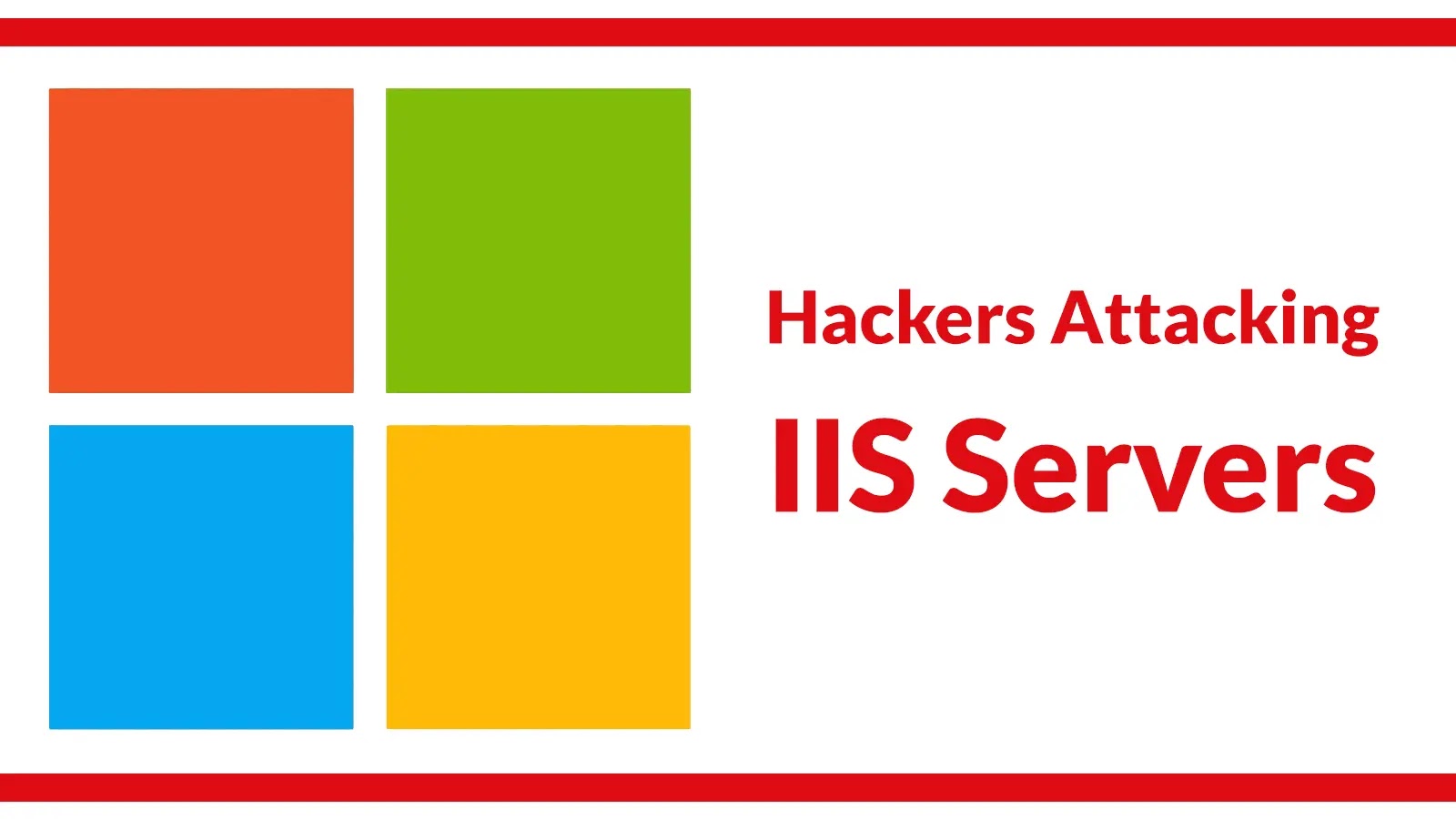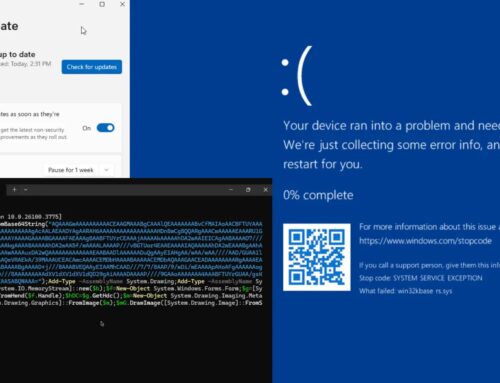
Hackers Attacking IIS Servers With New Web Shell Script to Gain Complete Remote Control
The digital landscape is a constant battleground, and a new threat has emerged, specifically targeting Microsoft Internet Information Services (IIS) servers. Cybersecurity researchers have uncovered a sophisticated web shell attack, leveraging a malicious script identified as “UpdateChecker.aspx,” designed to grant threat actors complete remote control over compromised systems. This isn’t just another web shell; it represents a significant escalation in attack complexity, employing advanced obfuscation to ensure persistence and evade detection.
For organizations relying on IIS for their web presence, this development demands immediate attention. Understanding the mechanics of this attack and implementing robust defenses are paramount to protecting critical infrastructure.
The Evolution of Web Shell Attacks
Web shells have long been a favored tool for attackers seeking persistent access to web servers. They are typically small, malicious scripts uploaded to a compromised server, allowing threat actors to remotely execute commands, upload/download files, and even establish backdoors. What sets “UpdateChecker.aspx” apart is its level of sophistication. Earlier web shells were often easily identifiable through signature-based detection. This new variant demonstrates a clear evolution, emphasizing stealth and evasion.
This particular attack goes beyond simple command execution; it’s designed for complete system takeover, posing a severe risk to data integrity, operational continuity, and compliance.
Dissecting the “UpdateChecker.aspx” Web Shell
The core of this attack lies within the “UpdateChecker.aspx” web shell script. While specific technical details such as a public CVE number are not yet available for this distinct web shell, its modus operandi is clear: to establish an enduring foothold within IIS environments. The term “obfuscation” here refers to techniques used to make the malicious code difficult for security tools and human analysts to understand and detect. This could involve:
- Code Encryption: Encrypting parts of the script to be decrypted only at runtime.
- Polymorphism: Altering the script’s code signature with each infection to bypass signature-based detection.
- Encoding: Using various encoding schemes (e.g., Base64) to hide malicious strings.
- Dead Code Insertion: Adding benign or non-functional code to make the script appear more complex and benign.
These techniques make it exceptionally challenging for traditional antivirus and intrusion detection systems to flag the activity as malicious, allowing the attackers to maintain a low profile while escalating privileges and exfiltrating data.
The Impact of Complete Remote Control
Achieving complete remote control over an IIS server is the ultimate objective for these attackers. Once this level of access is gained, the potential ramifications are severe:
- Data Exfiltration: Sensitive customer data, intellectual property, and internal records can be stolen.
- System Disruption: Websites can be defaced, services taken offline, or critical applications rendered inoperable.
- Lateral Movement: The compromised IIS server can serve as a launchpad for further attacks within the internal network.
- Ransomware Deployment: Attackers can deploy ransomware to encrypt data and demand payment.
- Cryptojacking: Server resources can be illicitly used for cryptocurrency mining.
- Reputational Damage: A public breach can severely damage an organization’s reputation and customer trust.
Remediation Actions and Proactive Defenses
Defending against sophisticated web shell attacks requires a multi-layered approach, combining proactive measures with robust detection and response capabilities. Organizations managing IIS servers should prioritize the following actions:
- Patch Management: Ensure all IIS servers and underlying Windows operating systems are kept up-to-date with the latest security patches. This includes patches for ASP.NET, .NET Framework, and other related components.
- Principle of Least Privilege: Implement strict access controls. Application pools should run with the minimum necessary permissions. File system permissions on web server directories should be highly restrictive.
- Input Validation: Implement rigorous input validation on all web applications to prevent injection attacks (e.g., SQL Injection, Cross-Site Scripting), which are common vectors for initial web shell upload.
- Web Application Firewall (WAF): Deploy and properly configure a WAF to inspect incoming HTTP requests and block known malicious patterns, including attempts to upload web shells or execute suspicious commands.
- Endpoint Detection and Response (EDR): Utilize EDR solutions on IIS servers to monitor for suspicious process execution, file modifications, and network connections that might indicate web shell activity.
- File Integrity Monitoring (FIM): Implement FIM tools to detect unauthorized changes to critical web server files and directories. Any new or modified .aspx files, especially in sensitive directories, should trigger an alert.
- Network Segmentation: Isolate IIS servers and web application networks from the rest of the corporate network to limit lateral movement in case of a breach.
- Regular Security Audits and Penetration Testing: Conduct periodic security audits and penetration tests to identify vulnerabilities and misconfigurations before attackers can exploit them.
Essential Tools for Detection and Mitigation
Leveraging the right tools is critical for identifying and mitigating web shell threats. Here’s a list of categories and specific examples:
| Tool Name/Category | Purpose | Link |
|---|---|---|
| Web Application Firewalls (WAF) | Protects web applications from common web exploits. Inspects HTTP traffic. | OWASP ModSecurity Core Rule Set (for self-hosted) |
| Endpoint Detection and Response (EDR) | Monitors endpoints for malicious activities, provides threat visibility and response capabilities. | Vendor-specific (e.g., CrowdStrike Falcon, Microsoft Defender for Endpoint) |
| File Integrity Monitoring (FIM) | Detects unauthorized changes to critical system and application files. | OSSEC |
| Vulnerability Scanners | Identifies security weaknesses in web applications and servers. | Burp Suite Professional, Nessus |
| Antivirus/Anti-Malware | Detects and removes known malicious software, including some web shells. | Vendor-specific (e.g., Malwarebytes, Microsoft Defender Antivirus) |
Conclusion
The emergence of sophisticated web shells like “UpdateChecker.aspx” underscores the persistent and evolving nature of cyber threats. For organizations relying on Microsoft IIS, this serves as a stark reminder of the need for continuous vigilance, robust security practices, and a proactive defense posture. By implementing strong input validation, maintaining stringent access controls, actively patching systems, and deploying advanced detection tools, organizations can significantly reduce their attack surface and thwart attempts by threat actors to gain complete remote control over their critical web infrastructure.





